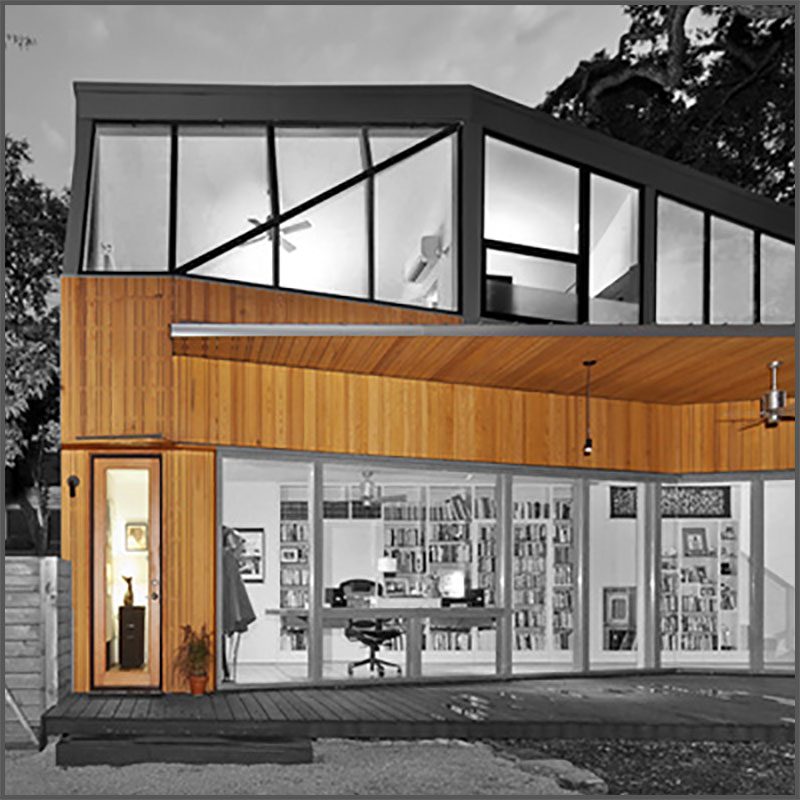Yellow Bald Cypress
Known for it's beautiful yellow tones and durability in exterior environments, this state tree of Louisiana, Yellow Bald Cypress is perfect for your outdoor kitchen, deck, pergola and interior siding.
Yellow bald cypress (Taxodium distichum var. imbricarium) is a deciduous conifer native to the southeastern United States, thriving in wetland environments with moist, acidic soils. With a distinctive pyramidal shape, feathery needle-like leaves, and reddish-brown exfoliating bark, it turns a vibrant golden-yellow in the fall. Adaptable to both wet and well-drained soils, this cypress variety is suitable for various landscapes. In addition to its ornamental appeal, the yellow bald cypress is valued for its durable wood, resistant to decay, and finds applications in construction and woodworking.
Species:
A tough, slow growing Deciduous Conifer common in the Southeastern United States. This slow growing softwood can be found in swamps with a buttressed base surrounded by roots that grow upward, called knees. Yellow Bald Cypress grows straight and tall, with few knots, making it a great wood for those looking for long, clear lengths of lumber or siding. It's resistance to rot makes it perfect wood for exterior applications.
Color of yellow bald cypress;
Owning up to it's name, Yellow Bald Cypress sports a fairly consistent, warm yellow tone, which makes it an amazing surface for reflecting light in an interior space. Lower grade Yellow Bald Cypress, such as #2, and #3 tend to have darker tones, mainly near the heart of the tree. Yellow Bald Cypress grows straight and tall, with few knots, making it a great wood for those looking for long, clear lengths of lumber or siding. It's resistance to rot makes it perfect for exterior construction applications.
common uses for Yellow bald cypress:
Yellow bald cypress (Taxodium distichum var. imbricarium) serves various purposes due to its adaptability, ornamental features, and durable wood. Some of the most common uses for yellow bald cypress include:
Landscaping:
- Yellow bald cypress is widely used in landscaping for its ornamental value. Its vibrant golden-yellow foliage in the fall, unique bark texture, and distinctive pyramidal shape make it a popular choice in parks, gardens, and residential landscapes.
Wetland and Riparian Restoration:
- Given its native habitat in swampy or wetland areas, yellow bald cypress is utilized in ecological restoration projects to enhance and restore wetland and riparian ecosystems.
Erosion Control:
- The tree's extensive root system aids in preventing soil erosion along riverbanks and water bodies, making it valuable for stabilizing shorelines.
Timber Production:
- Yellow bald cypress wood is valued for its durability, resistance to decay, and natural preservative properties. It is used in timber production for applications such as decking, fencing, and outdoor structures.
Construction and Woodworking:
- The durable wood of yellow bald cypress finds use in construction and woodworking. It is employed in crafting furniture, cabinets, and exterior applications where resistance to decay is crucial.
Urban Forestry:
- Planted in urban environments, yellow bald cypress contributes to urban forestry efforts by providing shade, enhancing aesthetics, and improving air quality.
Wetland Buffer Plantings:
- The tree is used in wetland buffer plantings to create natural barriers and enhance the ecological functions of wetland areas.
Wildlife Habitat Enhancement:
- Yellow bald cypress supports wildlife habitat by providing shelter and nesting sites for birds. The cones and seeds also serve as a food source for various wildlife species.
Educational and Recreational Spaces:
- Planted in educational and recreational areas, the tree enhances outdoor spaces, providing both aesthetic appeal and ecological benefits.
Economic Benefits:
- Beyond its environmental and aesthetic contributions, yellow bald cypress offers economic benefits through timber production, supporting local economies in regions where it is cultivated.
Fun Facts
There's a base of a Yellow Bald Cypress in Broken Bow, Oklahoma, near the Mountain Fork River with a diameter of over ten feet. Although only the base remains after a lightning strike many years ago, one can easily imagine the sheer size of this tree and easily compare it the Red Woods of Northern California. It's estimated this tree was alive many hundreds of years ago, possible during biblical times.
There are many references to Cypress wood in The Bible. For example, The Temple for Yahweh, built by King Solomon, according to 1st Kings 6:15, is said to have flooring made of Cypress.
view gallery
We typically offer Yellow Bald Cypress in the following sizes and grades:
| Scientific | Sub-species | Grade | Features | 4/4 | 5/4 | 6/4 | 8/4 | 12/4 | Plywood | Circle Sawn | Live Edge | Beam |
|---|---|---|---|---|---|---|---|---|---|---|---|---|
| Taxodium distichum | Yellow Bald Cypress | Clear | Clear Grain with no knots | |||||||||
| Taxodium distichum | Yellow Bald Cypress | Some knots | ||||||||||
| Taxodium distichum | Yellow Bald Cypress | #3 Knotty | Lots of knots |
Scientific information about Yellow Bald Cypress:
| Lumber - Planed, Straight Lined, Circle Sawn | Porch Posts |
| Interior T/G siding | Exterior board and bat siding |
| Custom Moulding \ trim | Radius Moulding |
| Decking | Wood Carving |
Check out some species other than Yellow Bald Cypress
Contact us Have questions about our products?
Give us a call or shoot us an email, we can help you find the right kind of wood to make your project look fantastic! From kiln dried lumber to flooring, molding to butcher butcher block counter tops, we've got you covered.
WOOD IS UNIVERSALLY BEAUTIFUL TO MAN. IT IS THE MOST HUMANLY INTIMATE OF ALL MATERIALSFRANK LLOYD WRIGHT, AMERICAN ARCHITECT

